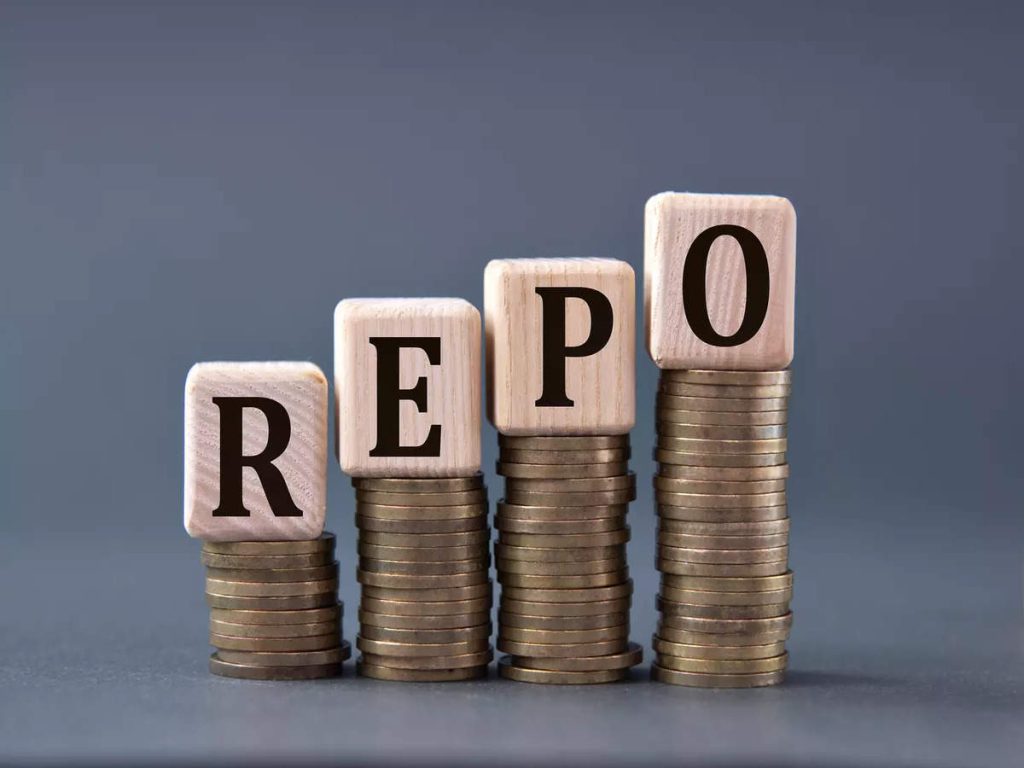The Repo rate is a primary tool regarding RBI’s monetary and credit policy. This rate significantly impacts the borrowing rates across the country. In September 2022, the Monetary Policy Committee (MPC) increased the repo rate by 50 basis points; therefore, the current repo rate is 5.90%.
Home buyers planning to opt for a loan should be aware of what repo rate is and how it can affect their borrowings.
What is Repo Rate?
Just like borrowers have to repay loan at a certain interest rate, financial institutions also must pay interest to RBI for borrowing. This interest is known as repo rates. The term ‘repo’ demonstrates a Repurchase Agreement or Repurchasing Option.
When financial institutions face a shortage in funds, they reach out to RBI to secure financing for an estimated tenor. During this process, scheduled financial institutions submit treasury bills, gold, and government bonds as collateral.
The repo rate is an effective tool to keep inflation in check. Hence, RBI increases or decreases the repo rate depending on the economic scenario. For instance, RBI raises this rate during high inflation to make financial lenders less inclined to borrow money. This eventually reduces the liquidity in the economy, thereby helping to bring down high inflation.
Subsequently, any modification in the current repo rate will further affect the financial institution’s credit cost, which impacts their lending policies.
How Does A Change in Repo Rate Affects Home Loans?
Any change in the repo rate will affect prospective homebuyers. Here is how the repo rate will impact home loan borrowers:
- Impact of a repo rate increase
An increase in repo rates leads to an increase in costs of credit for financial institutions. As a result, it limits their capacity to borrow and encourages them to charge a higher interest rate to retail borrowers for various loans.
Thus, this hike in interest rates limits borrowers from availing funds, thereby reducing the economy’s cash flow. However, moving ahead, this cash flow helps RBI to suppress rising inflation.
- Impact of a repo rate decrease
On April 2021, RBI reduced repo rates by 40 basis points from 4.4% to 4%. This repo rate reduction increased cash flows in the economy and increased the accessibility of funds for the general public.
In other words, a reduced repo rate enables financial institutions to borrow funds from RBI at a lower rate. In addition, one of the significant benefits of a reduction in repo rate is that individuals can apply for credits such as housing loans and others with their preferred lenders at a much lower interest rate.
This signifies that borrowers can easily avail of this secured loan with lower monthly instalments and loan burden. This, in turn, helps in the economic growth of the country.
Therefore a change in repo rates affects a financial institution’s interest rate; however the actual rates applicable for borrowers may vary across lenders. One can use a home loan EMI calculator to compare loans across various lenders and find one that suits their financial planning and budget.
In addition, various reputed lending institutions and NBFCs provide pre-approved offers to existing customers. These offers can help streamline the loan application process. These offers are available for financial products like loans against property and others. Individuals can check their pre-approved offers by providing requisite details, such as their names and contact numbers.
Other Factors that Affect Home Loan Interest Rates
In addition to repo rate, the home loan interest rate is also dependent on other factors. This include:
- Borrower’s financial profile
Housing finance institutions modify their interest rate after evaluating the risk associated with borrowers. Therefore, the higher borrowers’ risk, the higher will be its interest rate. While sanctioning any loan, financial institutions mandatorily consider the borrowers’ profiles by evaluating their credit scores and income stability to evaluate their creditworthiness.
- Property location
In real estate, home loan interest rates differ for different properties. For instance, a property that a borrower aims to buy is located in a prime location with good transport connectivity, and other amenities will have a higher resale value.
Similarly, older properties in remote areas are less valuable according to lenders than newer ones. Lenders charge a lower interest rate for newer properties in better locations as they will fetch higher resale value.
However, to obtain the most affordability financing option, it is essential to meet the home loan eligibility criteria. Therefore, moving forward, one must also consider the factors that can affect home loan eligibility to meet or exceed the eligibility.
So, for prospective borrowers knowing about repo rates is essential, as it adversely affects the lending interest rate. Therefore, staying updated with the current repo rate can help borrowers avail of suitable home financing options.




